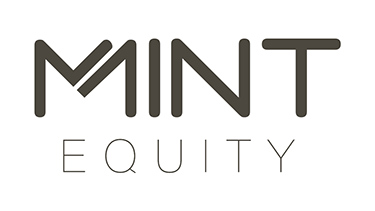Buyers monitoring the property market in the last 12 months would have noticed a significant increase in house prices and demand. Last week, the Australian Prudential Regulation Authority (APRA) advised banks to make changes to the way they assess a borrower’s ability to repay the loan.
Concerns over the hot property market have been bubbling away for a few months and APRA’s announcement comes less than 1 day after the Reserve Bank of Australia governor Philip Lowe declared it vital that “home loan serviceability buffers are appropriate”.
The International Monetary Fund (IMF) also called on Australia to address the rising financial stability risks posed by rocketing house prices, only a few weeks ago.
With pressure from the IMF and the RBA, it was inevitable that APRA acted.
What is changing to home loan lending?
APRA have directed the banks to change their minimum interest rate buffer on home loan applications from 2.5 to 3 percentage points.
Ok… so what does that mean?
Essentially, when a bank calculates if the borrower can repay the loan, they add a buffer on top of the current interest rate to simulate future increases. The increased interest rate is often referred to as a ‘stressed’ interest rate or repayment or ‘assessment rate’ which is different to the actual interest rate the borrower will have their real repayments based on.
For example, if the advertised home loan variable interest rate is 2.19%, the bank will assess your ability to repay the loan at an interest rate of 5.19% (3% higher than the actual rate). Before today’s changes, the banks were only required to add 2.5% to the current interest rate.
Changing the assessment rate will mean a higher income will be required to satisfy the increased ‘assessment rate’.
For example, if borrowing $800,000 on a 30 year term, this is how the banks would assess your repayments.
The borrower will now need to show they have sufficient income to repay $4,388 per month, rather than the previous stressed repayment of $4,144.
Essentially, this will result in a slightly lower borrowing capacity. For example the borrower may have previously qualified for a loan of $800,000 but now with the changed stressed rate, they might now only be able to borrow $780,000.
Will this lending change lower property prices?
No. Whilst we may see some borrowers having a slightly reduced borrowing capacity, this isn’t going to translate into lower property prices.
Property demand is still high and whilst new listings have trended higher through September, as social distancing restrictions have started to ease and the spring selling season sees a seasonal uplift, total listings are still -27.4% below the five year average. There is still an undersupply of properties on the market and owner occupied and investor demand is still high, so property prices won’t decrease any time soon.
In addition to the current demand, the international borders reopening will drive property demand even higher as Australians stuck overseas start to return in November and December.
Will interest rates go up?
Since these changes were announced we have seen some lenders increasing their fixed interest rates. So far, variable rates haven’t increased, but CBA, ING and Westpac have increased their 2, 3, 4 & 5 year fixed interest rates this week. No doubt, other lenders will follow.
What other lending changes can borrowers expect?
It’s likely that lenders will make modifications to their DTI ratios. ‘Debt-to-Income’ (DTI) ratio is the level each lender sets for how they assess how much debt a borrower has in comparison to their income. This is important to lenders to ensure the borrower has sufficient income to cover their debts.
An example of how the debt-to-income ratio works would be if a borrower has an investment property loan of $500,000 and a credit card limit of $5,000 and their annual income is $75,000 the ratio would be 6.73 ($505,000 divided by $75,000).
Currently a DTI of less than 8 is generally acceptable, but some lenders have a hard limit of 6 or 7. DTI ratios are mainly restrictive to investors, because most lenders include the owner occupied debt as well as investment debt when calculating the DTI ratio. However, there are some lenders which don’t include owner occupied debt in their DTI ratio, instead separating the owner occupied debts in their LTI (Loan-to-Income) ratio. In cases where an investor is carrying a large debt on their home, this method of calculation can provide more lending options for investors.
Property investors will be impacted by future DTI changes
As DTI ratios are mainly used to assess the ability for a borrower to repay their debts, any changes or limitations to DTI’s will affect investors primarily. DTI really only affects investors with multiple property loans and liabilities such as credit cards, car loans and or personal loans. By reducing the volume of properties and or debt an investor has, it reduces the lender’s risk if the borrower has income issues.
Owner occupied home loans are likely to avoid any major lending impacts.
One of the benefits of working with an experienced mortgage broker like Mint Equity, is your mortgage broker will be able to advise you on which lenders have more favourable DTI limits. This inside knowledge helps home buyers and property investors to secure a pre-approval without having multiple declined applications because of DTI limits.


